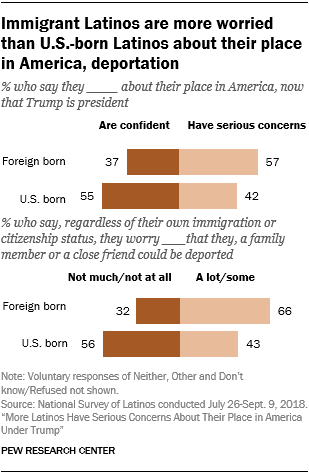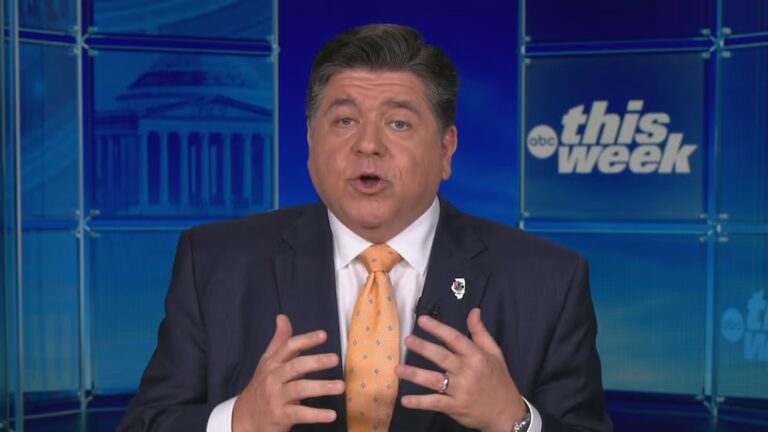
After two years of Donald Trump and his anti-immigrant rhetoric, fewer immigrant families are using federal food stamps — even though no formal changes have been made to the program or its eligibility rules.
The implication, according to researchers who have been studying the program for decades and other experts tracking the consequences of Trump’s immigration crackdown, is families who should still be eligible for those benefits — and who still need them — have voluntarily decided to leave the program for fear that they would be at risk if they applied through the official channels.
In other words, it appears Trump is making immigrant families too afraid to apply for federal assistance so they can afford food.
Researchers from Boston Medical Center’s Children’s HealthWatch have run an ongoing survey of welfare recipients since the 1990s. Lead author Allison Bovell-Ammon presented her and her colleagues’ new findings this week at a meeting of the American Public Health Association.
Their study found that participation in the Supplemental Nutrition Assistance Program by immigrant families who have been in the United States for fewer than five years and who are eligible dropped by nearly 10 percent in the first half of 2018. Immigrant families who have been in the US for more than five years also saw a drop in their SNAP participation, though a smaller one: 2 percent.
“Based on what we’ve heard anecdotally, people are really scared for their future,” Bovell-Ammon said in an interview.
These are preliminary findings, and it’s difficult to directly connect cause and effect here. But the Boston Medical Center study is some of the first data that supports what advocates and physicians who work with immigrant families have heard out in the field.
“I think that this is … confirmation of what we’ve been hearing from our networks of affiliates about the fear and the trepidation that immigrant families and their children have when it comes to interacting public benefits,” David Thomsen, who works on health policy at UnidosUS (formerly La Raza), which was not involved with the research, said.
The problem could only get worse when the Trump administration finalizes new regulations that would, in effect, punish migrant families for accessing public benefits.
The worrying drop in SNAP participation among immigrant families
Boston Medical Center started surveying recipients of SNAP and other public assistance after the 1990s welfare reform legislation took effect. Since 2007, they have surveyed more than 35,000 mothers of young children in five major cities: Boston, Baltimore, Philadelphia, Minneapolis, and Little Rock.
From 2007 to 2017, the survey showed a clear increase in the percentage of immigrant mothers whose families were eligible for SNAP and also actually enrolled in the program. The share hit 43 percent in 2017 among families who had been in the United States for five years or less. But in the first half of 2018, SNAP participation for that population dropped to 34.8 percent.
Likewise, for families whose mothers have been in the United States for more than five years, SNAP participation had risen to 44.7 percent in 2017, then dropped to 42.7 percent in the first six months of this year.

SNAP enrollment does tend to fluctuate in response to the economy. If the economy is struggling, enrollment goes up because more people are financially insecure; when it’s good, enrollment goes down because more people have steady jobs and steady wages. The economy has notably been at a high point over the past two years.
What worries the researchers is that even as the number of immigrant families receiving food stamps drops, more of them are saying that they have trouble finding enough food to eat. The percentage of immigrant families in the US for fewer than five years who said they were food insecure has steadily increased over the past decade, to 17.8 percent. For families in the US for more than five years, that figure rose from 10.8 percent in 2007 to 17.5 percent now.
So it doesn’t appear that the drop in SNAP participation can be fully explained by an improving economy, if families say they are still struggling to put food on the table. “There is still a need,” Bovell-Ammon said.
Why experts think Trump’s rhetoric is driving immigrant families out of SNAP
That leaves Trump. In his rhetoric and in his actions, the president has been the most virulently anti-immigration leader in a generation or more. He launched his campaign by invoking “rapists and murderers” crossing the US-Mexico border. The Trump administration aggressively separated parents from their children as they tried to enter the country. The government is detaining more migrants than ever before, as the Daily Beast reported.
More than half of the Latinos who migrated to the United States say they have serious concerns about their place in America right now, according to the Pew Research Center; two-thirds of them say they worry they or somebody close to them could be deported.

The data showing families dropping off SNAP suggests that people aren’t just afraid, they are changing their behavior. Despite the anti-immigrant rhetoric, research shows that migrants do not use public benefits more than native-born citizens do; if anything, they actually use those benefits less. And the plain fact is immigrants are eligible for these programs under federal law — and the federal government hasn’t done anything to change that.
But enrollment in food stamps among the migrant population is still dropping. For the people at Unidos and other advocacy groups, the explanation is obvious.
“People are disenrolling themselves from programs they are eligible for because of this climate,” Thomsen told me. “In terms of rhetoric and tone and specific targeting, I can’t personally think of a time in our recent history it’s been so overt.”
Forthcoming Trump regulations could make this problem even worse
The Trump administration is also pursuing actual policy changes that could soon punish immigrants for using federal benefits. As Vox’s Dara Lind explained in September when the administration announced its proposed overhaul of the “public charge” criteria:
When a draft version of that regulation leaked earlier in the year, the Migration Policy Institute had warned that millions of immigrants — between 5.2 million to 16.2 million people — could disenroll themselves from public programs like SNAP as a result. The regulation that the Trump administration ultimately introduced was not quite as harsh as that leaked draft, but even if the precise effect might be smaller, the general trend should be the same.
The public charge changes haven’t been finalized yet. But advocates looked at this new study on SNAP participation and saw even more reason to be fearful. If Trump’s rhetoric and enforcement actions are already driving immigrants away from public programs, it could get much worse once the government starts holding the use of those benefits against them when evaluating their visa status.
And the impact could persist for years, long after Trump himself has left the White House.
“Once this is out there, this is very hard to reverse,” Thomsen at UnidosUS said. “People disenroll and it’s hard to get them back.”
Sourse: vox.com






